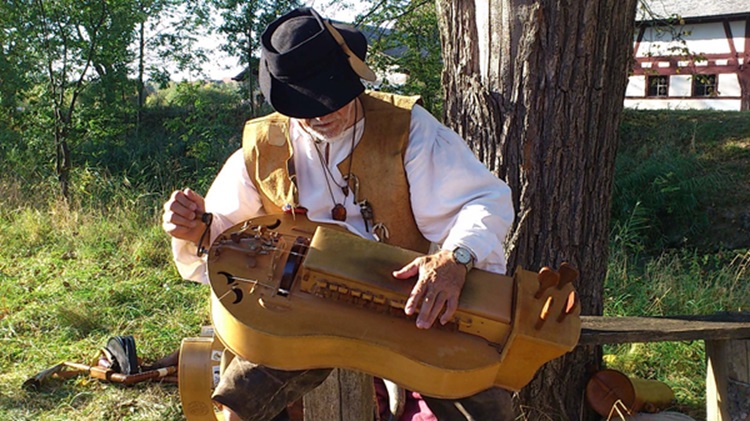Anybody familiar with the hurdy-gurdy must know that it is a string instrument with its roots in the Middle Ages in Europe. Originally, it was used for sacred music but later evolved to play folk tunes, and gained popularity at the French court for a while.
Over time, the hurdy-gurdy fell out of favor and became unfamiliar to many. However, there’s been a recent resurgence of interest in the hurdy-gurdy, both in North America and Europe. You can find more interesting details about the instrument in a hurdy gurdy book.
Hurdy Gurdy Origins
The exact origins of the hurdy-gurdy are not known. One theory suggests that the Moors from North Africa brought it to Europe during their invasion of Spain. They brought various string instruments, potentially including a precursor to the hurdy gurdy.
The earliest version of the hurdy-gurdy, known as an organistrum, dates back to the 12th century. This larger instrument required two musicians to operate and was primarily used for sacred music in churches. However, its design allowed for the adaptation to play secular music as well.
In the following century, the organistrum was downsized, enabling solo performance and leading to the development of the hurdy-gurdy as we know it.
Significant improvements were made to its key action to make playing easier and produce complex harmonies and faster melodies, particularly suited for dance music. As a result, the hurdy-gurdy shifted from its original sacred music role to folk and popular tunes.
Why Is It Named A Hurdy Gurdy?
Nobody knows why they call the hurdy-gurdy that name in English. The name only started being used in the 18th century. Some people think it might be related to “hurly burly”, which means a lot of noise and confusion. That could be because the instrument makes a loud sound.
In French, it’s called a vielle a roue, which means a “wheel fiddle”, describing how it works better.
Final Words
The hurdy-gurdy has a rich history with uncertain beginnings. Despite its unclear origin, it has evolved and remains popular in music today. Its unique sound and cultural significance highlight its appeal and contribution to musical diversity.


Comments are closed.